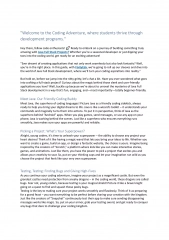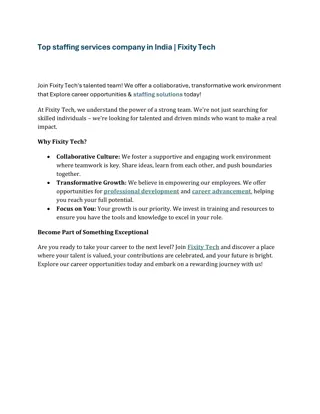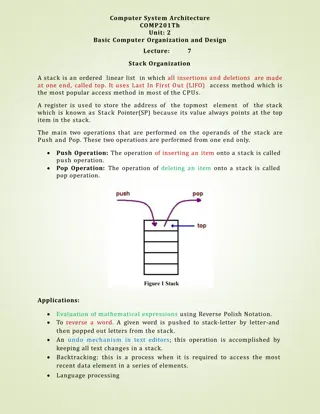
MERN Tech Stack for Web Development
Dive into the MERN tech stack comprising MongoDB, Express, React, and Node.js. Explore why MERN is widely used, its components, extensions like React-Router, and the benefits of using Node.js, MongoDB, and Express. Gain insights into building RESTful APIs, client-side UI design, server environments, and more.
Download Presentation

Please find below an Image/Link to download the presentation.
The content on the website is provided AS IS for your information and personal use only. It may not be sold, licensed, or shared on other websites without obtaining consent from the author. If you encounter any issues during the download, it is possible that the publisher has removed the file from their server.
You are allowed to download the files provided on this website for personal or commercial use, subject to the condition that they are used lawfully. All files are the property of their respective owners.
The content on the website is provided AS IS for your information and personal use only. It may not be sold, licensed, or shared on other websites without obtaining consent from the author.
E N D
Presentation Transcript
MERN Mongo (DB) Express (API Server component) React (Client/ UI design) Node (Runtime server environment)
Why MERN? Provide exposure to other technologies Tech stacks will keep changing learning a few variants will help you pick up new ones in the future MERN is widely used Individual components are used in other stacks Mongo provides a follow-on to Relational DB alternatives (discussed in SWEN-344)
Extensions React-Router Provides a simple page navigation system Beyond the basic SPA approach in React Nextjs Nextjs has a unique pre-build approach that will make you think about how the web works And might give you a headache Try creating a table w/o a <tbody> tag just<table><tr></tr></table> We will use React-Router We will not be using Nextjs (but feel free to experiment outside class!)
Nodejs in 60 seconds A cross platform run-time environment (think Java, Python, C#) Allows standalone Javascript code (outside a browser) Enables server side Javascript Main tools npm (node package manager) Lots and lots (and lots) of modules/ packages
MongoDB in 60 seconds Document oriented DB (vs. Relational) Collections instead of tables Relationships not required between collections Consistency between collections objects not required Data stored (invisibly) as text files Data manipulation via Mongo API Main tools: mongosh (command line mongo shell ) Compass (GUI)
Express in 60 seconds One of those many packages for Node Enables building RESTful apis on top of Node Allows creation of a web server with Node Product deployment is usually integrated with a production scale web server that can integrated Express Apache nginx IIS
React in 59 seconds Reference SWEN-344 A component based approach to designing web pages Uses JSX javascript extension syntax Operates on a state driven system to efficiently manage updates to each component on a page Originally for SPA (Single Page Applications), but extensions (like Express) support simple page routing
Node Web Server Just like Flask CORS errors when running client and server on separate servers Nextjs allows setting CORS response headers in each API (see sample/ starter code) Can pick/ choose with APIs are allowed to be called from the outside
Nextjs in 60 seconds Built on top of React React runs full on the client (browser) Next allows static webpage generation or partial static page generation or complete client side Advantages can be Speed Security Flexibility Disadvantages Complexity in design and process Debugging
More on Nextjs React -> Nextjs Server side rendering Hydration errors when server replaces HTML (fixes errors from source code) React state only works with use client Client side event handling (e.g. onClick) requires use client Using component classes requires use client So why??
How is NextJS different? Nextjs Classic React Traditional web pages Browser Browser Browser Server components HTML & Javascript HTML & Javascript HTML & Javascript Server side render (static pages HTML only ) Server deployment Server deployment Server deployment npm run build npm run build
MaterialUI Google s material UI is a set of React components designed to help with consistent look/ feel and provide responsive capabilities There are free versions (what we will use), and paid versions Common components are: Box Table Button Styles are applied inline using sx={{ }} Supported components - Material UI (mui.com)
React Router React is normally SPA (Single Page application) We will add the concept of multiple pages using a popular React package called react-router Basic concepts BrowserRouter Routes Links Menu or Layout React-router allows *client-side* routing (vs. requesting new pages from the server each time)
Testing Test before commit is still the golden rule Since our environment is largely in javascript, we will use Jest as our unit test framework We install jest using npm, and since it will be run via npm, we can use the following syntax to execute from the command line npm test That will run all the tests npm test -- -t 'call ping endpoint That will run the single test with the given description passes options to jest -t runs the test with the specified nameS
Testing systems vs units of code While testing small functions is important, it is insufficient at scale We will test functional components and features, workflows and scenarios While the tools are unit tests, we are actually going beyond, and performing feature or system testing using the unit test framework
Basics of jest We will focus on using jest to validate our server side functionality UI/ Front end testing is another whole discipline we will not have time to cover that in our course Jest will look for files named xxxx.test.js, and attempt to run the code inside E.g. api.test.js with a function test('call ping endpoint', async() => { This test is governed by two parameters The test name ( call ping endpoint ) and the test code (the arrow function) result = await testPing(); expect(result).toBe('pong'); }); The test calls an API endpoint, and compares the result using Jests expect method, with a standard toBe comparator
Setup and teardown Jest is very flexible in organizing your test methods You can have functions run before each test or after each test beforeEach(() => { initializeCityDatabase(); }); afterEach(() => { clearCityDatabase(); }); Or do a single setup or teardown beforeAll(() => { return initializeCityDatabase(); }); afterAll(() => { return clearCityDatabase(); });
Custom comparators Sometimes a standard comparator is not what we need (also there are many, many available so look before you go custom!) A custom comparator can specialize the checks you want to make to validate your test e.g. expect.extend({ toMatchDocs(received, expected){ //Your custom code } This will allow you to match only certain fields, ignore case, ignore order etc
expect.extend({ customCollectionMatch(received, expected) { let found = false; //Check each object in the rcv list ... does it exist in the expected list? //NOTE: Expected is a subset, so received must have AT LEAST those items expected.forEach(element => { found = received.find(rcvdObject=> { if ((rcvdObject.name == element.name) && (rcvdObject.type == element.type)) return true; else return false; }); }); let pass = found==null?false:true; //NOTE: If test fails, have to return a function in 'message' if (pass) return {message: "Found expected collections", pass: true} else return {message: ()=>"Did not find expected collections", pass: false} } })
expect.extend({ customCollectionMatch(received, expected) { let found = false; //Check each object in the rcv list ... does it exist in the expected list? //NOTE: Expected is a subset, so received must have AT LEAST those items expected.forEach(element => { found = received.find(rcvdObject=> rcvdObject.name == element.name); }); let pass = found==null?false:true; //NOTE: If test fails, have to return a function in 'message' if (pass) return {message: "Found expected collections", pass: true} else return {message: ()=>"Did not find expected collections", pass: false} } })
Grouping your tests Always organize your test code. It s just good practice for maintainability 1. Separate related tests into distinct files 2. Group individual tests into themes using describe describe("Test basic DB Setup", () => { //npm test -- -t 'Call list collections' test('Call list collections', async()=>{ let result = await db_api.getCollections(); //Since the content can vary, just check for something coming back expect(result.length).toBeGreaterThan(0); }), test('list docs in collection ', async() => { let result = await db_api.getDocs('mycollection'); //Since the content can vary, just check for something coming back expect(result.length).toBeGreaterThan(0); }), test('close db', ()=> db_api.closeMainDB()) })
The tyranny of compatibility Much of Javascript/ Server is switching to ES6 syntax This is basically retiring the const importedFunction = require( ./src/importedfiles.js ) notation With import {importedFunction} from ./src/ importedfiles ; However, jest still does not fully support this We COULD mix/ match ES6 and CommonJS, but we will try to stick with ES6 syntax
Enabling jest for ES6 Step 1: Prevent Jest from trying to transform ESM code to CommonJS, updating your Jest config (package.json example below) with: "jest": { "transform": {} } Step 2: To be able to parse ES modules without an external transformer (e.g., babel), start Node with the --experimental-vm-modules flag. This can be done by changing how Jest is started by the npm "test" script (again inside package.json): "scripts": { "test": "node --experimental-vm-modules node_modules/jest/bin/jest.js" } You can now run npm test






















